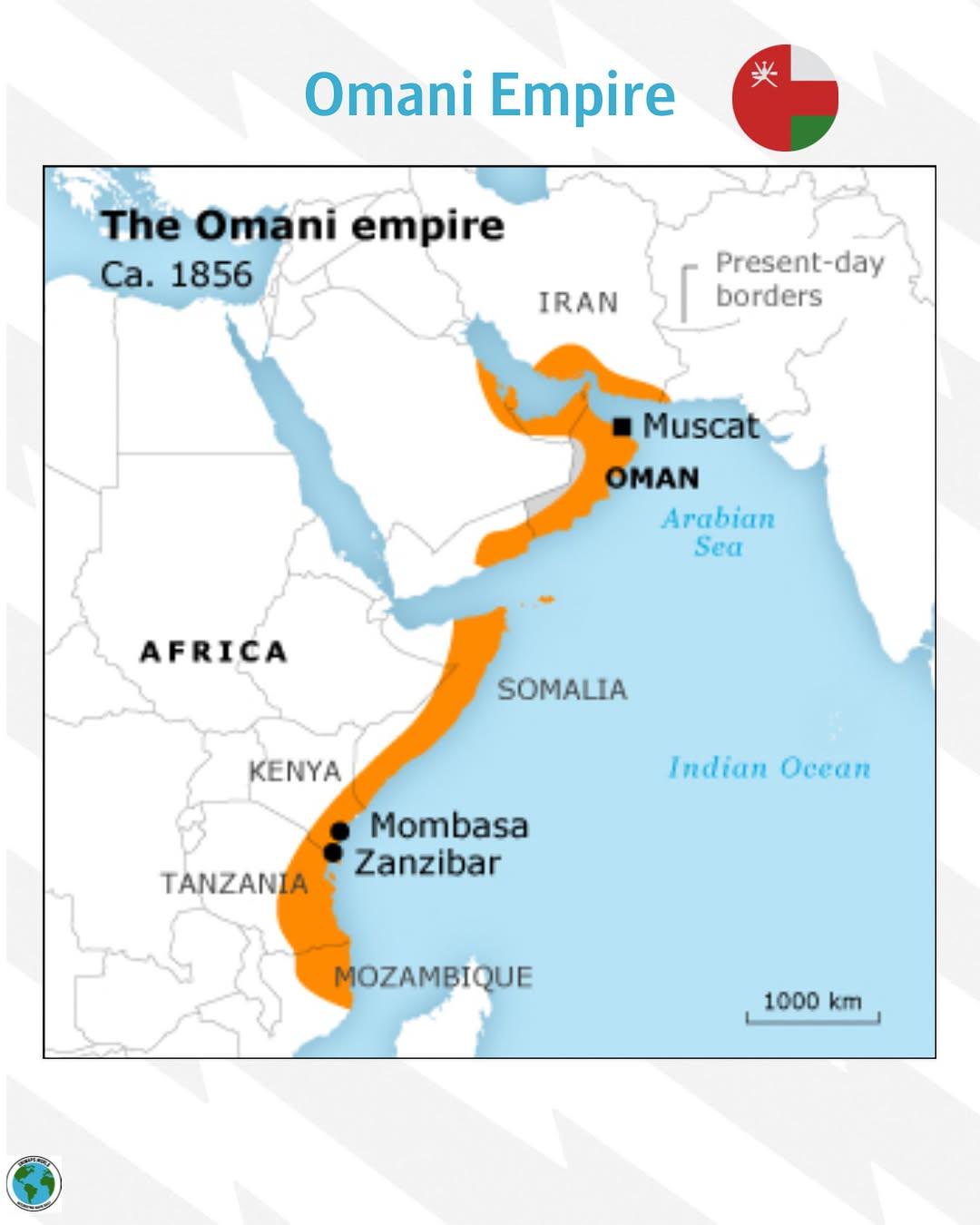Omani Empire Map of 1856


Alex Cartwright
Senior Cartographer & GIS Specialist
Alex Cartwright is a renowned cartographer and geographic information systems specialist with over 15 years of experience in spatial analysis and data...
Geographic Analysis
What This Map Shows
The Omani Empire Map of 1856 provides a fascinating look into the vast territories controlled by Oman during this time period. It highlights the regions under Omani influence, including parts of the Arabian Peninsula, East Africa, and the Indian Ocean islands. This map showcases not only the geographical expanse of the empire but also the strategic trade routes and ports that were vital to its economy and cultural exchanges.
Deep Dive into the Omani Empire
The Omani Empire, at its peak in the 19th century, was a significant maritime power known for its extensive trade networks and strategic naval prowess. It controlled key ports along the eastern coast of Africa, notably in Zanzibar and Mombasa, which were crucial for the trade of spices, ivory, and slaves. Interestingly, Oman’s influence extended far beyond mere territorial control; it played a fundamental role in the cultural and economic exchanges between Africa, Arabia, and even India.
At this time, Oman was not only a political entity but also a hub for diverse cultures, blending Arab, African, and Indian influences. The Sultanate of Oman was known for its progressive trade policies and its diplomatic relationships with European powers, which helped it maintain sovereignty against colonial encroachment.
It's fascinating to note that the Omani Empire was one of the first to recognize the importance of naval power in maintaining trade routes. The empire’s fleet was instrumental in protecting merchants and their goods, allowing Oman to flourish economically. Additionally, the empire's strategic location along the trade routes connecting Europe and Asia made it a melting pot of ideas, commodities, and cultures.
Furthermore, the socio-political structure of Oman during this period was relatively progressive. The Sultanate was known for its relatively inclusive governance, allowing various ethnic groups to participate in trade and administration. This inclusivity helped foster a sense of unity among the diverse populations within the empire, which is crucial for understanding how Oman managed to maintain control over such a vast area.
Regional Analysis
Examining the Omani Empire as depicted in the 1856 map, we can break down its influence into several key regions. In Arabia, the coastal areas, particularly Muscat, served as the empire's capital and a primary trade hub. The strategic positioning of Muscat allowed Omani merchants to engage effectively with Indian, Persian, and East African traders.
Moving to East Africa, the island of Zanzibar stands out as the heart of the spice trade, especially cloves. The map highlights the importance of this region as a cultural crossroads where African, Arab, and Indian influences converged, creating a unique blend of traditions and practices. Interestingly, Zanzibar was not only a commercial center but also a center for the exportation of enslaved Africans, which raises complex discussions about the human impact of such trade practices.
In the Indian Ocean, the Omani Empire’s reach extended to crucial islands such as Socotra, which served as a staging ground for trade expeditions. This island's unique biodiversity and geological features drew interest from various empires and explorers and remain significant in contemporary discussions about biodiversity and conservation.
Significance and Impact
Understanding the Omani Empire's geographical and cultural significance during the 19th century sheds light on the complexities of trade and cultural exchange in the region. The empire's extensive trade networks not only enriched its economy but also facilitated cultural diffusion, which has left lasting impacts on the societies involved.
Moreover, the fall of the Omani Empire to colonial powers in the late 19th century marked a significant shift in the region's political landscape. The repercussions of this shift are still felt today, as the legacy of Omani trade routes and cultural exchanges continues to influence modern Oman and its neighbors.
As we look to the future, the historical significance of the Omani Empire raises questions about how current nations navigate their identities in a globalized world. Are there lessons to be learned from Oman’s past in terms of diplomacy, trade, and cultural integration? The map of the Omani Empire serves as a reminder of the intricate tapestry of history that shapes our present-day geopolitical landscape.
Visualization Details
- Published
- August 8, 2025
- Views
- 126
Comments
Loading comments...